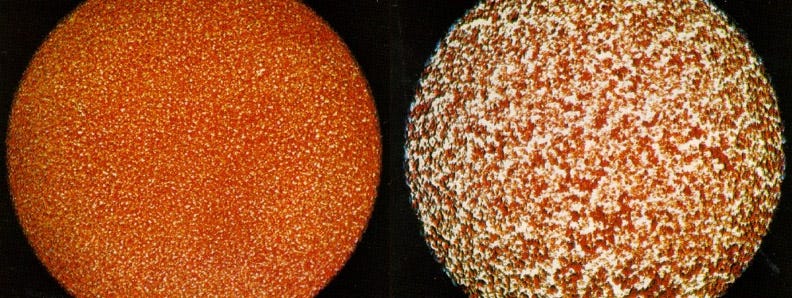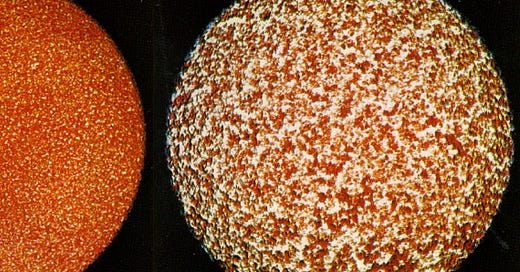Lectins
Lectins, abundant and diverse proteins found in foods, have agglutinating properties that affect your blood and the lining of your digestive tract.
A chemical reaction occurs between your blood and the foods you eat that is part of your genetic inheritance. It is amazing but true that today, in the twenty-first century, your immune and digestive systems still maintain favoritism for foods that your blood type ancestors ate.
We know this because of a factor called lectins. Lectins, abundant and diverse proteins found in foods, have agglutinating properties that affect your blood and the lining of your digestive tract. They are a powerful way for organisms in nature to attach themselves to other organisms in nature.
Lots of germs, and even our immune systems, use this super glue to their benefit. For example, cells in our liver's bile ducts have lectins on their surfaces to help snatch up bacteria and parasites. Bacteria and other microbes have lectins on their surfaces as well, which work rather like suction cups, so that they can attach to the slippery mucosal linings of the body. Often the lectins used by viruses or bacteria can be blood type specific, making them a stickier pest for people of that blood type.

So, too, with the lectins in food. Simply put, when you eat a food containing protein lectins that are incompatible with your blood type antigen, the lectins target an organ or bodily system (kidneys, liver, gut, stomach, etc.) and can begin to interact with the tissues in that area.
Here's an example of how a lectin agglutinates in the body. Let's say a Type A person eats a plate of lima beans. The lima beans are digested in the stomach through the process of acid hydrolysis. However, the lectin protein is resistant to acid hydrolysis. It doesn't get digested, but it stays intact. It may interact directly with the lining of the stomach or intestinal tract, or it may get absorbed into your bloodstream along with the digested lima bean nutrients.
Once the intact lectin protein settles someplace in your body, it has a magnetic effect on the cells in that region. It clumps the cells together and they are targeted for destruction, as if they, too, were foreign invaders. This clumping can cause irritable bowel syndrome in the intestines, cirrhosis in the liver, or block the flow of blood through the kidneys – to name just a few of the effects. Lectins can also act as 'fake hormones,' latching onto the receptor for a hormone and either blocking the normal action of the hormone (this is called an 'antagonist') or revving up the hormone receptor non-stop (termed an 'agonist.')
You may remember the bizarre assassination of Georgi Markov in 1978 on a London Street. Markov was killed by an unknown Soviet KGB agent while waiting for a bus. Initially, the autopsy could not pinpoint how it was done. After a thorough search, a tiny gold bead was found embedded in Markov's leg. The bead was found to be permeated with a chemical called ricin, which is a toxic lectin extracted from castor beans. Ricin is so potent an agglutinin that even an infinitesimally small amount can cause death by swiftly converting the body's red blood cells into large clots that block the arteries. Ricin kills instantaneously.
Fortunately, most lectins found in the diet are not quite so life-threatening, although they can cause a variety of other problems, especially if they are specific to a particular blood type. For the most part, our immune systems protect us from lectins. Ninety-five percent of the lectins we absorb from our typical diets are sloughed off by the body. But at least 5 percent of the lectins we eat are filtered into the bloodstream, where they can react with and destroy red and white blood cells. The actions of lectins in the digestive tract can be even more powerful. There, they often create a violent inflammation of the sensitive mucous of the intestines, and this agglutinative action may mimic food allergies. Even a minute quantity of lectin is capable of agglutinating a huge number of cells if the particular blood type is reactive.
This is not to say that you should suddenly become fearful of every food you eat. After all, lectins are widely abundant in legumes, seafood, grains, and vegetables. It's hard to bypass them. The key is to avoid the lectins that agglutinate your particular cells—determined by your blood type.
For more information on lectins, see my book Eat Right For Your Type (Penguin - Putnam, publishers).



